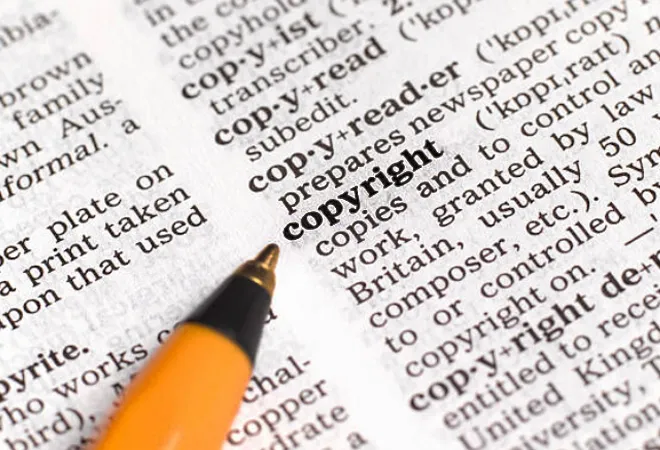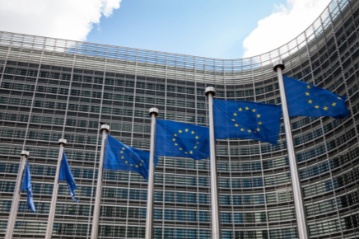
The COVID-19 pandemic has spread to every country in the world and has affected almost every aspect of everyday life. Education systems were no exception, as they witnessed the largest disruption in history, affecting nearly 1.6 billion learners in more than 190 countries.. The systems had to be changed dramatically, whereby classes had to be taken remotely on digital platforms. Further, students’ access to libraries and physical educational material was largely curtailed, and the provision of access to such material was difficult due to many factors such as copyright.
Copyright and educational material
Copyright exists in textbooks, scholarly articles, online lectures, presentations, library collections, and research databases and, therefore, plays an integral role in education. Copyright consists of a bundle of economic and moral rights using which the author can allow or disallow the usage of their work. Consequently, the author can receive remuneration for allowing the use of their work. Since copyright provides legal means to exclude content, it can act as a lever affecting transmission of knowledge by impeding information flow.
Copyright consists of a bundle of economic and moral rights using which the author can allow or disallow the usage of their work.
Copyright is complex and the transition to distance learning has intensified the issues that the educators already faced. The inability to access physical resources has greatly increased reliance on digital copies. To be able to provide digital copies, educational institutions and libraries need to enter into digital licensing arrangements which may be unavailable or be prohibitively expensive. At the same time, any attempts to make scanned, photographed, or video recordings of copyrighted material may fall foul of the copyright law in case a substantial part of the work is reproduced.
COVID-19 and copyright trends
The advent of COVID-19 and the transition to e-learning witnessed five major trends: First, since students lost access to classroom material, photocopying vastly increased; second, EdTech tools gained popularity; third, some publishers allowed no-cost or free licenses for short durations; fourth, more assessments moved online; and lastly, teachers taught using materials protected by copyright sometimes under paid or free licenses or sometimes under fair use protection or by infringements being ignored by the right holder.
Publishers undertook various measures to voluntarily provide freely available content online for a limited time as goodwill gestures, and some copyright collectives offered a temporary increase in the percentage amount of permitted copying.
Initially, publishers undertook various measures to voluntarily provide freely available content online for a limited time as goodwill gestures, and some copyright collectives offered a temporary increase in the percentage amount of permitted copying. Multiple subscription-based media publishers also followed suit and provided free access for COVID-19 articles. However, most of the measures taken were too limited, short-lived and, in some cases, wholly redundant. Since the goodwill gestures are not in play anymore, educational institutions, libraries, and at times, individuals have to bear the brunt of the financial implications of investing in tools and online licenses.
COVID-19 demonstrates systemic issues with Copyright system
COVID-19 has illustrated how copyright acts as a barrier in accessing educational materials and demonstrated the vulnerabilities of copyright system to deal with unprecedented situations like prolonged closure of educational institutions and libraries. However, these problems are but a reflection of the wider and pre-existing access barriers. COVID-19 has not generated problems with copyright but has magnified the effects of longstanding tensions and issues. With continued remote learning in many schools, the friction between accessibility and copyright continues due to the expense of digital content and newly relevant software tools.
A way forward
While no one knows when COVID-19 would end and education systems will be able to return to pre-pandemic modalities, it is essential to come up with solutions to reduce barriers to educational materials due to copyright. The policymakers need to reassess the role of copyright, especially in relation to education and provide better solutions to increase accessibility. There is a need to recalibrate the copyright system in a way where public interest is not hampered and the system is able to keep up with the drastic social and technological changes.
An alternative could be to promote measures such as “open access” or “open educational resources” for educational material. Such measures do not undermine copyright but use the existing copyright system to increase accessibility. A publication would be considered open access if there are no barriers in accessing it, i.e., a person seeking access to such a publication is not restricted due to any technical, legal, or financial reasons. “Open Educational Resources” are those materials that are either available in the public domain or are available under open licenses allowing no-cost access.
A publication would be considered open access if there are no barriers in accessing it, i.e., a person seeking access to such a publication is not restricted due to any technical, legal, or financial reasons.
It is important to note here that the report “Review of the Intellectual Property Rights Regime in India”, presented before the Rajya Sabha, has also considered the issue of copyright and educational materials. The report recommends that necessary changes must be introduced in the Copyright Act, 1957 to foster a fair literary culture across the country. The report recommends that Section 51 (1) of the Copyright Act be amended to allow government educational institutions to have reprographic works and to store such materials in the libraries for increased accessibility. The report also emphasises the importance of National Mission on Library and has recommended the setting up of community libraries across the country. The report also suggests that existing libraries must be upgraded to provide access to works of foreign authors. At the same time, the report also cautions that it is important to protect the rights of the authors since such rights encourage them to invest in and develop quality books and works. Therefore, the rights of the authors must be balanced with the public interest of increasing accessibility.
While COVID-19 has demonstrated the deep institutional problems created due to copyright in accessing educational material, there is no quick-fix solution to remedy it. While there have been several calls to modify copyright law to reduce protection and improve access, reduced protection may lead to the problem of underproduction of literary works. Thus, deciding the right balance becomes a challenging task. Though measures such as open access and open educational resources may provide some relief, it does not completely solve the issues of inaccessibility. It is the need of the hour to develop stronger policy measures around copyright and open access to resolve the issues in accessing educational materials.
The views expressed above belong to the author(s). ORF research and analyses now available on Telegram! Click here to access our curated content — blogs, longforms and interviews.




 PREV
PREV


